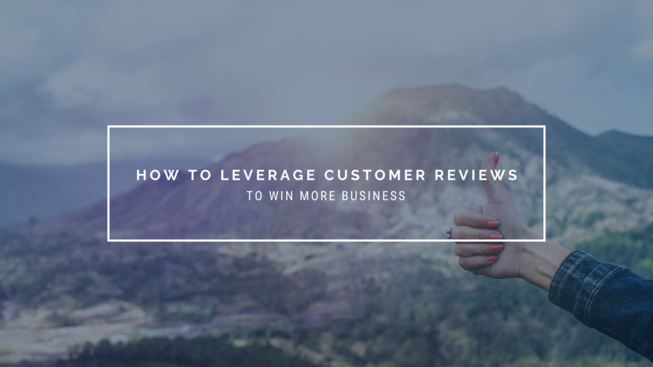How to Leverage Customer Reviews to Win More Business
How is your brand doing with customer reviews? Are you getting reviews from the majority of your customers, or only from the person who makes the reservation? If the latter situation applies to your biz, you could be missing 50% to 75% of your review opportunities. Think about what double the number of reviews could look like on your review platforms, in comparison to your competitors. Are you responding to every review, and in a timely way? Do your reviews just sit there on the review platform (for example, Facebook recommendations or on a trip review blog…) or are they working for you in your current marketing across multiple channels? How about those coveted review stars you can see on some brands’ organic search results… are you getting those, too—and if not, do you know how to make that happen?
Online customer reviews are the boon (and sometimes bane) of the business world. We all want great customer reviews for our businesses, and we fear negative reviews, especially unfair or even fraudulent reviews that we can’t quickly control. This article offers up our tried and true tips for savvy brands on leveraging customer reviews across your digital and offline marketing channels to help convert new prospects into customers. We offer tips on responding to reviews, including negative or fraudulent ones. If your customer review process isn’t fully automated yet, we’ll show you best practices for how to do that and why your 80/20 focus should be on these three review platforms—Google, Facebook, and TripAdvisor—before you expand out.
How to Leverage Customer Reviews on All Marketing Channels
1. Leverage reviews on your website.
Because reviews help build trust between your prospective customers and your business, it makes sense to highlight appropriate reviews throughout your website. For example, you may want to feature reviews that speak of your business as a whole on your homepage, and highlight product-focused reviews on the appropriate product or tour page. Because people tend to put weight on reviews that are no more than two months old, updating these regularly is a great way to present your business as relevant to the visitor, too. With seasonal businesses, last year’s reviews will still have a ton of relevance, of course.
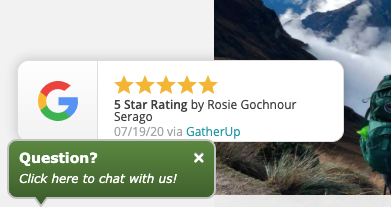
PRO TIP:
A review tool like Gatherup will automate getting all of your reviews (both internal and third party) on your website. This can make highlighting all reviews or pulling in trip-specific reviews on trip pages easy. This is key to winning review stars in your organic search result listings, through review schema markup. You can’t have duplicate reviews on any tour page and you need to nest your review schema inside your product schema markup. (Not sure how to do review markup? Reach out to us!)
2. Leverage reviews in your marketing assets.
There are people out there singing your praise… why not use those praises in everything that relates to your marketing?! Consider using great reviews in:
- Downloadable assets, like visitor guides
- Brochures
- Chalkboard signs outside your storefront for walk-in traffic
Take a look at how this restaurant cleverly leverages a negative review—and is said to have brought a ton of foot-traffic through their doors!
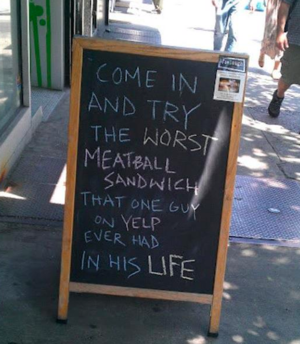
The options on where to use your reviews are really only limited by your imagination. As long as it supports your efforts and is genuine, it’s a good thing to consider across the board.
3. Leverage them in new videos and ads.
Use your best testimonials in your videos as copy overlay; this is a great away to tell the story of the experience you offer. You can also use testimonials in your paid social media campaigns, too.
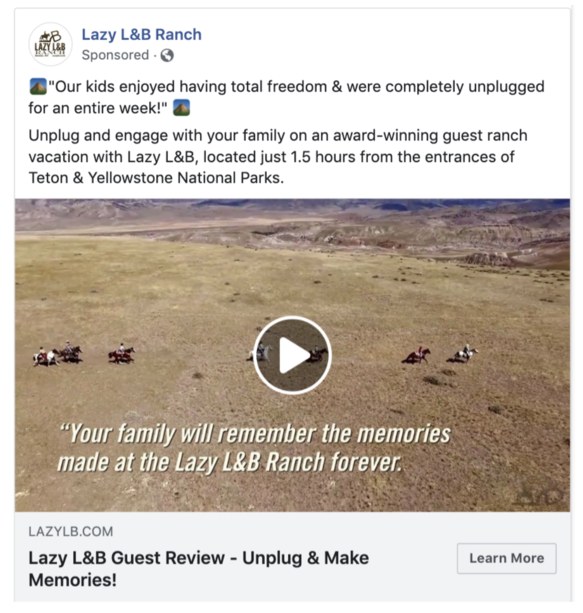
4. Leverage them in your social media.
Some of the most powerful marketing happens when happy customers share their experiences on social media. This can be in the form of a recommendation/review or a post that shares photos and a recap of what they experienced. The latter is what we call user-generated content (UGC): this gives potential customers an authentic, inside look into your adventure brand experience from the point of view of someone just like them. Because of this, UGC often gets more engagement than other posts.
Pro Tip:
When your customers become brand ambassadors and begin creating user-generated content, make sure you’re leveraging them! Learn how to find and share this great content on Facebook and Instagram.
5. Leverage them in your email newsletters.
Using reviews in your emails can go a long way: take a look at the two examples below. Note how SandCloud mixes social proof by including reviews from their social media in their emails; this is a great example of how you can cross-leverage!
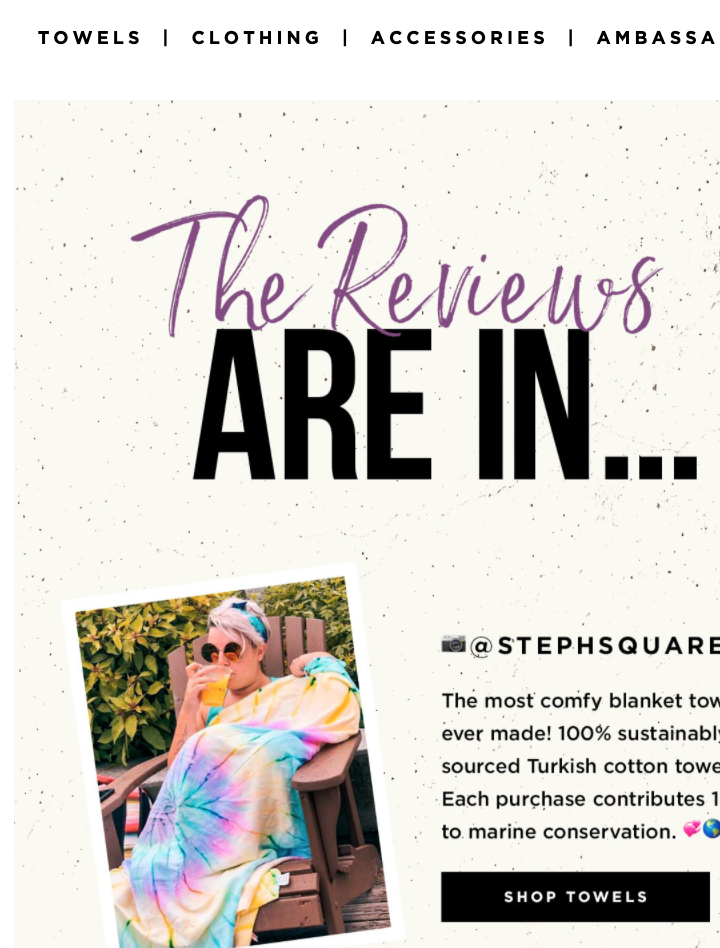
6. Leverage them in your PPC ads.
Share your best reviews in your PPC ad copy and ad extensions: [5000 5-star trip reviews!] Then link to your trip reviews page. Don’t have a page dedicated to your trip reviews yet? Add it to your task list, because you absolutely should have one!
Best Practices for Responding to Positive and Negative Reviews
Now that we’ve shared how to leverage your reviews, let’s take a quick look at best practices for responding to both positive and negative reviews.
Timely responses and a personal touch go a long way.
It’s essential to respond to every single review—good or bad!—in a genuine, personal way. Too often, however, we see reviews left lonely, unanswered, and under-used. We know that not only do prospects read your customers reviews, 97% read your business replies too. Your replies ideally should give them a good understanding of the warm humans behind the brand. If that’s not what you are getting from reading your company’s responses, start changing that right away in your next review responses. Build this into your weekly operating schedule: assign review responses to someone on your team who has great customer service skills and hold them accountable for staying on top of this effort weekly, even in the crush of peak season.
Bonus: reading the good reviews is a great reminder of the impact you make on the customers that choose you for their adventure-filled day!
Be ready for negative reviews: it’s not a matter of if, but of when.
It’s not a matter of if you get negative reviews; it’s a matter of when. The most important thing you can do is anticipate and have a solid strategy for handling it quickly and effectively. Nearly all negative reviews are, in fact, a golden nugget opportunity to glean valuable insight in how your adventure brand is showing up for your customers, what to do better, — and it can be a chance to turn someone’s day around.
Here’s the cheat sheet for handling them efficiently:
- Get all the information about that customer’s experience first: What really happened? Was there really an issue, and if so, how bad? Or, is this a customer who didn’t understand what your experience was about? (E.g. like a low water trip that they complained about.)
- Make sure your response is fit for the front page of the New York Times: Remember that what you write will be public, and you don’t want to damage your brand’s reputation with something that could be misinterpreted or make you and your company look like a jerk. Yep—you know those responses… you’ve seen ‘em by others. Be careful in the heat of the moment that you don’t become that person, too! If you are a hothead or get ambushed easily by negative feedback, whether it’s legitimate or not, assign the cool cucumber on your team to the task. It’s that simple. Delegate and empower someone else to reply so you can move on to creating something new and great for your business.
- #HACK your brand’s response by being helpful, authentic, clear, and kind: Sometimes, a negative experience stems from a misunderstanding. Sometimes, it stems from someone on your team making a mistake, an operations snafu, or simply a bad day. Thankfully, most customers don’t expect perfection—they just expect problems to be dealt with fairly, with competence, and with warmth. Here are helpful things to remember when crafting your response:
- Validate your customer’s feelings: Even if there was a misunderstanding, you cannot “correct” someone’s emotions.
- Be transparent about what happened: If your operations were overwhelmed and people had long waits, ‘fess up. Acknowledgement of fault, when appropriate, demonstrates a willingness to own the problem and a desire to fix it. It also takes the wind out of the angry customer’s sail and makes your brand look honest and of integrity. Everyone will appreciate that!
- Take the resolution offline: Ask the customer to contact you, so you can make it right for them.
Managing fraudulent reviews.
These happen, and they feel really destructive. Replying coolly and calling out the fraud is a first reply (like that person was not ever on your trip) and work through the review platform to get the comments taken down. These reviews can be taken down, but it can be hard work to get that to happen in a timely way.
Remember… you can “fire” bad customers!
Every now and again, there is someone who is just over the top negative and is affecting all your other customers on any given trip. Deal with the current issue, then go ahead and “fire them.” We said it, and we really do mean it. Blacklist them off any future trips by making sure their names are in the “do not sell any trips to” customer list. Unsubscribe them from your email newsletter. You can block them from your social media as well, if they are truly awful.
Pro Tip:
The 80/20 rule for adventure brand trip review platforms applies: Google My Business, TripAdvisor, and Facebook are still the big dogs of the adventure industry, particularly within the U.S. These platforms are also actively working to reduce fake reviews, and they are most trusted among consumers. Outside the U.S., there may be additional local platforms that your customers trust; do some research, but these three also apply to international travelers. We recommend you get GREAT at asking for, collecting, and responding to these 3 big players first before extending your efforts to other platforms. Don’t overlook Google – this is the first place to go to if your TripAdvisor reviews are extensive and your Facebook content is fresh and consistently updated. Google is THE powerhouse of organic search and getting your reviews going strongly there is really important in your total SEO strategy. Focus on TripAdvisor next and Facebook recommendations last.
Automate and Optimize Your Customer Review Process
You don’t get what you don’t ask for, so you’re missing the boat if you’re not asking your customers to share their experience with you, directly and then on specific review platforms. Solid customer review processes filter out bad reviews early to help minimize them from getting online in public view. This is one of the most important reasons to quickly send out your trip/product review request right after their experiences. This heads off the angry customer from posting online – they can get right back to you privately and you have a chance to address their problem directly.
Here are the best practice tips for setting up a solid and mostly automated review process:
Ask for reviews within a few days of their experience with you.
If it’s a longer international trip, it might be more like a week later so they have time to get back home. Make this trip review request part of your post trip thank you communication. Automate this via your reservation system, your email platform, or a third party review system.
Personal touch matters here, too.
Make sure your outreach is personalized to the customer by name (this should be in your waiver forms or your reservation system). You also want to make sure that it’s coming from a real person at your company.
Empower your customer to reach out personally if they were less than satisfied.
Be sure your review communication has a link for them to directly contact you if they were unhappy with their experience so that your team can improve their processes and you can make it right for the customer. You don’t want them posting a negative review online if you can help it!
Do include the three big player platforms for review options.
You are on Google My Business, TripAdvisor, and Facebook with your adventure brand, unless you’ve been hiding under a rock all these years. Be sure to include all three as options for your guests to review. They can pick the one they are most comfortable with. If you are light on reviews on one site, say Google My Business for example, adjust your review email request to include only Google for a few weeks to catch up. Then bring back the other review sites when you are ready. See our Pro Tip above, too. Google is the 800 pound gorilla you want to be sure you are feeding consistently!
If it isn’t already, automate this process so that it works even when you or your team aren’t in the office.
Emails asking for reviews should go out automatically a set number of days after a trip date, within your reservation system, for example. Online waivers are the best for maximizing your review efforts. Send waiver emails and names automatically to your third party review tool (like Gatherup or Trustpilot) or to your email platform (like MailChimp) and automatically send out review request emails daily.
The End Goal: Use Your Hard Won Reviews to Drive New Business for your Brand.
We know brands that filter review requests to only those folks they “know” had an exceptional experience. Others send out reviews only to the person who actually booked the trip. It might be a booking for 2 people or for 10 people. Don’t shortchange yourself and second guess your customers, collect all the reviews you can and make sure your process has a way for any unhappy customers to reach out directly and get what they want: a solution to the problem they experienced.
What do you imagine prospective customers are thinking when they see 7,000 mostly 5-star reviews for a trek in Peru and the nearest competitor has thousands fewer?! Well, that has a huge positive impact, even if it’s subconscious! Reading these reviews immediately reveals to the prospective customers the essence of the amazing trekking experience they could have if they, too, choose that company.
You can do this, too!
_
For the newest resources on reviews, visit our Customer Review Platforms For Adventure Brands Blog. Enjoy!

